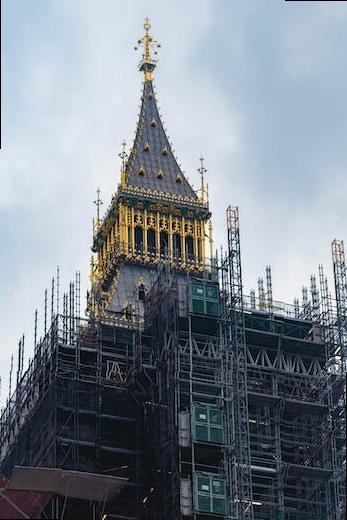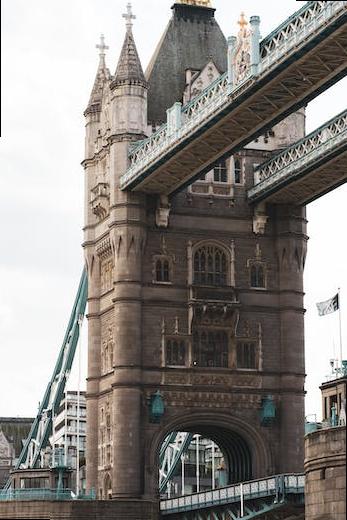London is a city of contrasts, richness and diversity. It is a place where different cultures, traditions and histories come together to form a unique tapestry that showcases the diversity of the city’s architecture. With more than 2,000 years of continuous settlement, London has seen a fascinating transformation in its architecture, and today it is a city where the old and new coexist side by side.
Contemporary London architecture is a reflection of this rich history and its constant evolution. The city has undergone significant transformations over the past few decades, with architects from around the world contributing to the city’s urban landscape. London is often referred to as a city of many Londons, each with its own unique character and style. The contemporary architecture styles in London have been influenced by various factors such as economic forces, technological advancements and cultural movements.
From iconic landmarks like the Gherkin, the Shard and the Walkie Talkie to revamped industrial spaces such as the Tate Modern, contemporary architecture in London has come a long way. This article will explore the various styles, influences and trends that have shaped the contemporary architecture of London.
London’S Contemporary Architecture: Ten Perspectives
“London’s Contemporary Architecture: Ten Perspectives” is a book that explores the diverse contemporary architecture of the city of London through the eyes of ten experts. The book highlights the various styles and influences of architecture in London and how architecture has evolved over time. In the context of how many Londons are there, the book explores how the city’s architecture reflects the multiple identities of the city.
London is a city of contrasts, with many different boroughs, each with its own unique identity. The book shows how the city’s architecture reflects these differences, from the sleek lines of Canary Wharf to the ornate Victorian buildings in Chelsea. Each expert gives their perspective on the architecture of a particular area or landmark in London, highlighting how the city has been shaped by its history and culture.
Overall, the book shows that there are many Londons within the city, each with its own unique character and architecture. From the grandeur of Westminster to the edgy creativity of Shoreditch, the book demonstrates how the city’s architecture reflects the diverse range of people and cultures that make up London.
Globalization, Diversity, And Innovation
Globalization, diversity, and innovation have all played a role in creating multiple Londons around the world. There are various cities named London in countries such as Canada, the United States, and Australia, each with its unique characteristics and history.
As a result of globalization, people from all over the world have migrated to different parts of the world, bringing their culture and identity with them. This diversity has contributed to the creation of multiple Londons and the fusion of different cultures in these cities.
Innovation has also played a part, with new technology and transportation making it easier to connect and travel between different parts of the world. However, even with these advancements in transportation, certain rules and regulations remain, such as the need for a passport to travel from London to Belfast.
Therefore, globalization, diversity, and innovation are factors that have contributed to the creation of many Londons around the world, each with its identity and culture. To travel from London to Belfast, you need to apply for a passport using the passport application process – do you need a passport London to Belfast?
There is only one London, which is the capital city of England and the United Kingdom. It is a global center for finance, commerce, arts, and culture. With a population of over 8 million people, it is one of the most populous cities in the European Union.

The name “London” was first recorded in the 2nd century AD and has evolved over the centuries. The city has a rich history, including being the center of the British Empire and surviving the devastating effects of World War II.
London’s iconic landmarks include the Tower of London, Buckingham Palace, the Houses of Parliament and Big Ben, and the London Eye. It is also home to many museums, galleries, and theaters, such as the British Museum, the National Gallery, and the West End.
While there are other cities around the world with similar names, such as New London in Connecticut, USA, and East London in South Africa, there is only one London that is known globally as a cultural and economic hub.
The City’S Evolution Over Time
London has evolved and transformed significantly throughout its history. There are different versions of London that can be distinguished based on the different periods of its history. The first iteration of London was founded by the Romans in AD 43 and was initially known as Londinium. This became a significant center of trade, commerce, and learning leading to the establishment of the famous St Paul’s Cathedral.
The next version of London emerged during the Middle Ages as the city underwent significant development and eventually became the capital of England. During this period, the Tower of London was built, and several other architectural landmarks emerged. The Tudor age saw significant growth and development leading to the Renaissance period. This was a period of cultural growth and evolution culminating in the construction of the infamous Shakespeare’s Globe theatre.
London during the Victorian era saw the rise of the industrial revolution, and the city expanded to accommodate new immigrants from across the world. The city’s skyline was transformed with the emergence of powerful industries such as the Bank of England, the Houses of Parliament, and the Royal Albert Hall. The modern age has seen a greater transformation, particularly after the Second World War, with the emergence of a modern financial center and the construction of towering skyscrapers like The Shard.
Therefore, there have been multiple versions of London, with each time period contributing significantly to the city’s evolution, transformation, and impact on the world.
There is only one London city, which is the capital city of England and the United Kingdom. However, the term “London” is sometimes used to refer to other places or entities related to the city of London. For example, the term “Greater London” refers to the administrative region that encompasses the city of London and its surrounding areas, while the “City of London” refers to the historical and financial district within the region.
Additionally, there are some places around the world that are also named after London, such as London, Ontario in Canada, and New London, Connecticut in the United States. However, these places are not considered separate Londons, but rather named after the English city.
In summary, while there are some places named after London in other parts of the world, there is only one London city that is the capital of England and the United Kingdom.
The Impact Of Technology
The impact of technology is immense. It has made many tasks easier and faster. Technology has also made the world a smaller place through the internet and social media. As for the question, there is only one London in the world. However, there are many cities and towns around the world named after London, including New London and South London. Technology has made it easier to connect and communicate with people in these different Londons. Through technology, people can learn about different places and cultures. To learn about London Bridge history, check out how to see the London Bridge.
The Role Of Sustainability
The role of sustainability is significant in the context of how many Londons there are. The concept of sustainability is essential to ensure the longevity and preservation of our resources for future generations. In the case of a city like London, promoting sustainable practices is crucial to reducing the negative impact of urbanization on the environment.
One way to achieve sustainability in London and its multiple boroughs is through the promotion of public transportation systems. London already has an extensive public transportation network with tube lines, buses, and trains operating throughout the city. The encouragement of cycling and walking can also help reduce London’s carbon footprint, decrease pollution levels, and encourage citizens to lead healthier lifestyles.
Sustainability efforts must also address waste reduction, recycling initiatives, and air and water pollution. Policy measures that ensure businesses operate in an environmentally responsible manner along with encouraging building designers to implement energy-efficient features in construction will also contribute to the city’s sustainable development goals.
In conclusion, sustainability plays a vital role in the context of how many Londons exist. A commitment to sustainable practices will ensure that environmental and resource protection is upheld, enabling London to thrive in a sustainable manner.
London As A Cultural Hub
London is one of the most culturally diverse cities in the world, attracting people from all corners of the globe. There are many Londons in the city, each with its own unique character and cultural offerings. Some of the most well-known Londons include the West End, known for its world-class theatre productions and musicals, and the South Bank, home to the National Theatre and the Tate Modern art museum.
London is also a hub for music, with a thriving live music scene that caters to all tastes, from classical to pop and everything in between. The city hosts numerous music festivals throughout the year, including the famous Notting Hill Carnival and the BBC Proms.
History shows that traditional London food includes dishes like jellied eels and pie mash, which can still be enjoyed today by learning how to make London pie mash and liquor. However, the city has also become a melting pot of cuisines from around the world, offering a truly international dining experience.
In conclusion, London’s diverse cultural offerings make it a truly unique city. Whether you’re interested in art, theatre, music, or food, there’s always something new and exciting to discover.

There is only one city named London, which is the capital of England and the United Kingdom. However, there are other places around the world that have been named after London, such as London, Ontario, in Canada, and New London, Connecticut, in the United States. There are also suburbs and districts within cities that have been given the name London, such as London boroughs in Greater London. Overall, there is only one major city named London in the world, but there are several other places that have been named after it or use the name as part of their own.
The Intersection Of Old And New
London is a city where the old and new intersect in unique ways. As one of the oldest major cities in the world, London has a rich history that is visible in its many historical buildings and landmarks. At the same time, London is also a hub for innovation and technology, with cutting-edge developments in industries such as finance, fashion, and the arts.
There are many Londons in this city, each with its own character and charm. From the traditional streets of the East End to the modern skyscrapers of Canary Wharf, London is a city of contrasts where different eras and cultures come together.
Despite the city’s size and complexity, London’s transportation system is renowned for its efficiency and reliability. Whether you are a local or a visitor, there are many resources available to help you navigate the city’s public transport system. Check out the top apps for London transport that can help you learn how to use London public transport. With these tools, you can discover the many Londons that this amazing city has to offer.
There is only one London in the world. It is the capital of England and the United Kingdom. However, there are some other cities and towns that share the name “London” in different parts of the world, but they have no official relation to the city of London in England. For example, there are six different places in the United States called London, located in states such as Kentucky, Ohio, and Arkansas. There is also a town named London in Canada, as well as one in Australia. However, none of these places are considered to be alternate versions of London, England. London is a city with a rich history and cultural heritage that attracts millions of visitors each year. It is known for its iconic landmarks such as Big Ben, the London Eye, Buckingham Palace, and the Tower of London. It is home to multiple world-class museums, art galleries, theaters, and universities. With its diverse population, bustling streets, and vibrant nightlife, London is a truly unique and exciting city that has captured the hearts of many over the years.
The Importance Of Public Spaces
Public spaces are of utmost importance in cities like London that are home to diverse cultures and communities. The city has evolved over centuries and has many Londons within it. To cater to the needs of such a diverse population, public spaces play a vital role.
Public spaces provide an opportunity for people to interact, socialize, and build relationships. London’s public spaces, such as Hyde Park, Trafalgar Square, and Southbank, are used for events, gatherings, and cultural celebrations. They bring people from different backgrounds together and foster a sense of community.
Public spaces play an essential role in promoting physical and mental health. Londoners can use these spaces for recreational activities, such as jogging, cycling, and yoga. They also provide an opportunity for people to relax and de-stress in a peaceful environment, away from the hustle and bustle of city life.
Public spaces contribute to the economic and cultural development of London. They attract tourists, businesses, and investment to the city. They showcase the city’s diverse culture and identity, making it a more appealing place for people to live, work, and visit.
In conclusion, public spaces are crucial for cities like London, which are home to diverse cultures and communities. They provide a platform for people to socialize, promote physical and mental health, and contribute to the city’s economic and cultural development.
There is only one London in the world. It is the capital city of England and the United Kingdom, located in the south-east of England. London is the largest city in the UK and one of the most populous in Europe. It is a center for culture, finance, history, and tourism. London is divided into 32 boroughs and the City of London, which is a separate entity within the Greater London area. The City of London is the historic core of the city and is known for its financial institutions and historical landmarks such as St. Paul’s Cathedral and the Tower of London. The other boroughs of London include areas such as Greenwich, Camden, Westminster, and Islington, each with their own distinct characteristics and attractions. In terms of international recognition, London is widely considered to be one of the most important and influential cities in the world, known for its cosmopolitan nature and diverse communities. Overall, there is only one London in the world and it is an iconic and significant city with a rich history and culture.
The Influence Of International Architects
The influence of international architects can be seen in the development of many Londons around the world. These Londons are often characterized by towering skyscrapers, modern architecture, and a high-density urban environment.
One of the most notable Londons outside of the UK is London in Ontario, Canada. This London is known for its diverse architecture, with buildings designed by famous architects such as Arthur Erickson and Peter Dickinson. Another London can be found in the United States, in the state of Ohio. This London features a unique blend of historic and modern architecture, including the iconic Columbus Center for Science and Industry.

The influence of international architects can also be seen in developing nations, where architects from across the globe are working to transform urban areas into modern, vibrant cities. In India, for example, the city of Mumbai is undergoing a transformation thanks to the work of architects like Hafeez Contractor, who has designed some of the city’s most iconic skyscrapers.
Overall, the influence of international architects has played a significant role in shaping many Londons around the world. From modern skyscrapers to mixed-use developments, these cities are a testament to the creativity and vision of architects from all corners of the globe.
There is only one London, which is the capital city of England and the United Kingdom. There may be areas or towns in the world with the same name, but there is only one London that is globally recognized as the political, cultural, and economic hub of the UK. It is located on the River Thames and has a population of over 8 million people, making it one of the most populous cities in Europe. London is known for its historical landmarks, including the Tower of London, Buckingham Palace, and Big Ben, as well as its thriving art and music scenes. The city is also home to numerous universities, attracting students from all over the world. Overall, London is a diverse and cosmopolitan city that has a long and rich history, and its influence extends far beyond the borders of the UK.
Controversies And Challenges
In the context of how many Londons are there, there have been controversies and challenges faced by researchers and geographers. One of the controversies is whether the City of London and Greater London should be considered as separate entities in counting Londons. Some argue that the City of London is historically and culturally distinct from Greater London, and should therefore be counted separately. Others argue that Greater London is a more accurate representation of the whole metropolitan area and should be used as the sole counting unit.
Another challenge is defining what constitutes a “London”. This can be subjective and vary depending on the perspective of the person counting. For example, should a neighborhood be considered a separate London if it has its own distinct identity and culture? Or should it be included as part of a larger London area?
Furthermore, the issue of how many Londons there are can be complicated by the fact that there are different ways to measure and count cities. For example, a city can be counted by population, geographic boundaries, or cultural and social ties. As a result, there may be different answers to the question of how many Londons there are, depending on the criteria used to define and measure them.
There is only one London, which is the capital city of England and the United Kingdom. Located in southeastern England, London is one of the most populous cities in Europe with a population of over 9 million people. It is a global hub of culture, business, finance, and politics, and is renowned for its history, museums, theaters, and iconic landmarks such as the Tower Bridge, Buckingham Palace, and Big Ben.
Despite there being only one city called London, there are several neighborhoods, districts, and towns within the greater London area. These include areas such as Greenwich, Camden, Kensington, and Chelsea, each with their own unique characteristics and attractions. However, when referring to London as a whole, there is only one city that holds this name.
In conclusion, there is only one London, which is one of the most significant cities in the world, and is an important center of business, tourism, and culture.
Future Possibilities And Potential
The future possibilities and potential of the number of Londons are numerous. Currently, there is only one London, located in England. However, there are several cities and towns around the world that have adopted the name “London” for various reasons, such as their historical connections to the city in England or a desire to emulate its cultural and economic influence.

In the future, it is possible that more cities and towns may adopt the name “London” as they seek to establish their own international identity and attract tourists and businesses. Additionally, as the world becomes more connected and globalized, it is possible that these various Londons may become even more intertwined, working together to share knowledge, resources, and ideas. This could lead to new partnerships and collaborations that could have a significant impact on the global economy and cultural landscape.
Overall, the future of how many Londons there could be is uncertain, but it is clear that the possibilities and potential for growth and development are vast. Whether or not more cities adopt the name “London,” the city will continue to be a symbol of innovation, creativity, and progress for people around the world.
There is only one official city called “London” in the world, which is the capital and largest city of England and the United Kingdom. It has a population of over 8 million people and covers an area of 607 square miles. However, there are several cities and towns around the world that share the name “London”. These include:

1. New London, Connecticut – a city in the United States named after London, England.
2. South London, Ontario – a district in Canada named after London, England.
3. East London, South Africa – a city located on the southeastern coast of South Africa.
4. London, Kentucky – a city in the United States named after London, England.
5. London, Arkansas – a town in the United States.
Despite sharing the same name, these cities and towns are distinct and separate from the London in England. Therefore, when referring to “London”, it is generally understood to mean the city in England unless otherwise specified.
Last Minute Additions
In conclusion, the question of “how many Londons are there?” is not a straightforward one to answer. Depending on the context and criteria used, there can be multiple answers. From a geographical perspective, there is one London, the capital city of England and the United Kingdom. However, when it comes to cultural, linguistic, or even historical aspects, there can be various interpretations of what constitutes a London. In this sense, London can encompass a diverse array of locations or entities, including neighborhoods, landmarks, pop culture references, or even fictional universes. Ultimately, the multiplicity of Londons speaks to the city’s significance as a cultural hub, a place of imagination, and a site of diverse experiences.
Some people might argue that there is more than one London based on their personal affiliation or attachment to specific parts of the city. For instance, one could argue that East London and West London are two distinct Londons in terms of their cultural and socio-economic characteristics. Alternatively, one could also argue that there is a North London and a South London divide that creates two separate Londons in terms of their demographics and lifestyle. Overall, these perspectives reflect the complexity and richness of London’s urban diversity.
In conclusion, while the question of how many Londons there are might not have a clear-cut answer, it offers insights into the city’s identity and plurality. London’s multiple interpretations and representations give us a glimpse of its dynamic and multifaceted nature, making it a city that defies easy categorization. Whether you see London as a global metropolis, a hub of creativity, or a collection of distinct neighborhoods, the city offers a wealth of possibilities for exploration and discovery.
